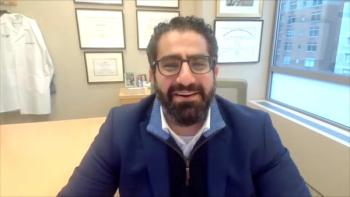
Short-Term CV Risk in Patients With Newly Diagnosed Cancer
A retrospective study in patients with newly diagnosed cancer has identified an increased risk of cardiovascular (CV) abnormalities that are aggravated by cancer stage.
A retrospective study in patients with newly diagnosed cancer has identified an increased risk of cardiovascular (CV) abnormalities that are aggravated by cancer stage.
A cancer diagnosis can prove to be a source of significant stress for the patient—online stress management programs have been developed in an effort to lower the psychological stress in this population. One such study conducted in Europe, the results of which were
To understand the early physiologic effects of such stress in the newly diagnosed population, researchers examined the Surveillance Epidemiology and End Results—Medicare linked database to populate information on patients who had a new primary diagnosis of breast, lung, prostate, colorectal, bladder, pancreatic, or gastric cancer or non-Hodgkin lymphoma between 2002 and 2011. Matched controls without cancer were included in this study and the pairs were followed through 2012.
The primary outcomes of interest were myocardial infarction (MI) and ischemic stroke, both defined under the umbrella of arterial thromboembolism (to assist with collecting diagnostic code data).
Of the 279,719 matched pairs that were included in the analysis, the 6-month cumulative incidence of arterial thromboembolism was 4.7% in patients with cancer (95% CI, 4.6%-4.8%), compared with 2.2% (95% CI, 2.1%-2.2%) in control patients (hazard ratio [HR], 2.2; 95% CI, 2.1-2.3). Specifically, patients with cancer were more than twice as likely to suffer an MI and about twice as likely to suffer an ischemic stroke compared with their matched control. The 6-month cumulative incidence of MI was 2.0% (95% CI, 1.9%-2.0%) in the patient compared with 0.7% (95% CI, 0.6%-0.7%) in control patients (HR, 2.9; 95% CI, 2.8-3.1). The incidence of ischemic stroke was 3.0% (95% CI, 2.9%-3.1%) in patients and 1.6% (95% CI, 1.6%-1.7%) in controls (HR, 1.9; 95% CI, 1.8-2.0).
The authors also note that their analysis found that cancer stage was associated with an increased risk of these events in the patients, but the risk usually resolved within a year. Additionally, the highest risk was observed in patients with lung, gastric, and pancreatic cancers—these 3 cancer types have some of the
The authors discuss the need for a CV intervention, such as an antithrombotic or statin, to prevent CV progression in these patients, and recommend designing clinical trials to answer these questions.
The study has been published in the
Newsletter
Stay ahead of policy, cost, and value—subscribe to AJMC for expert insights at the intersection of clinical care and health economics.















































